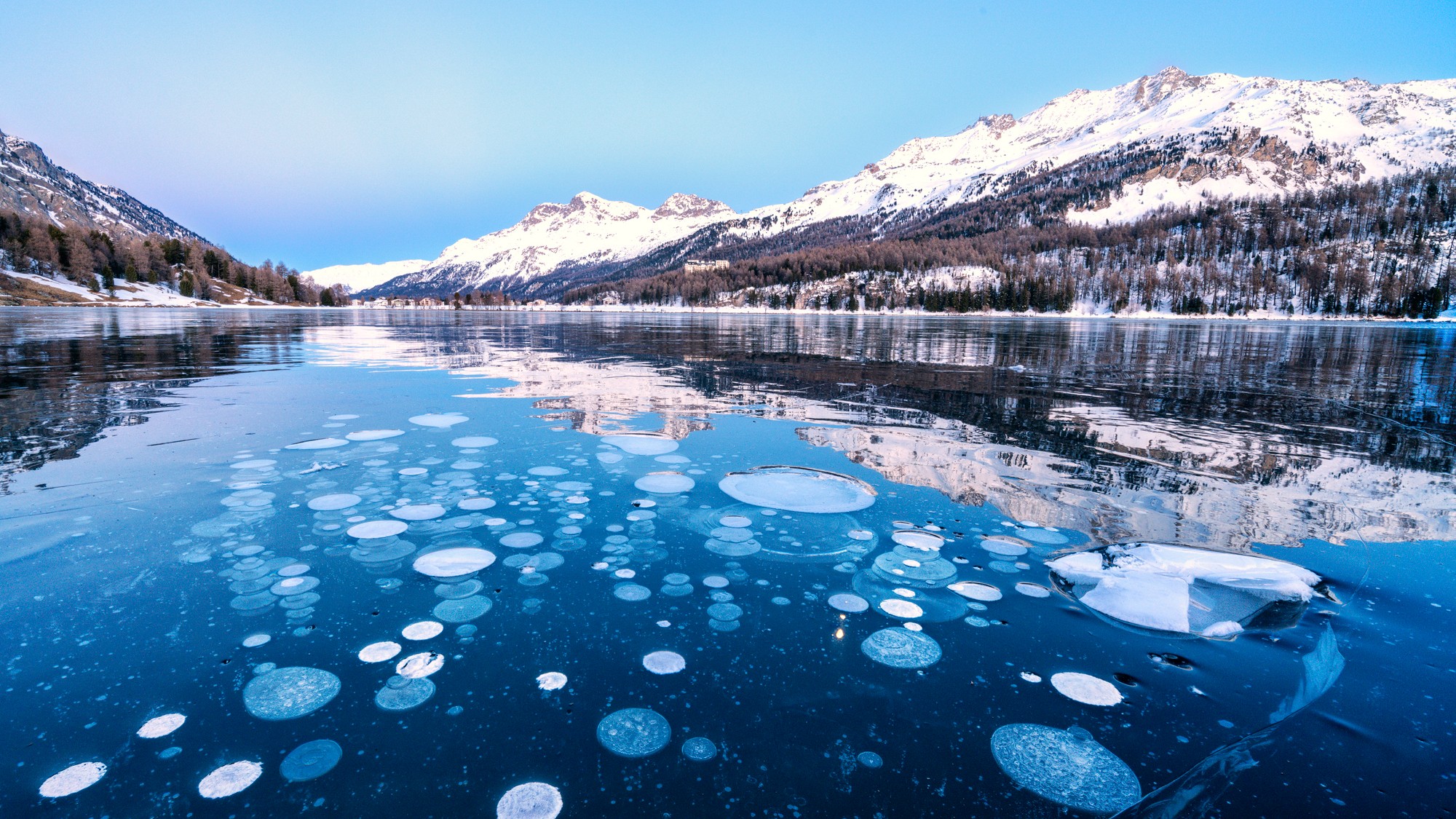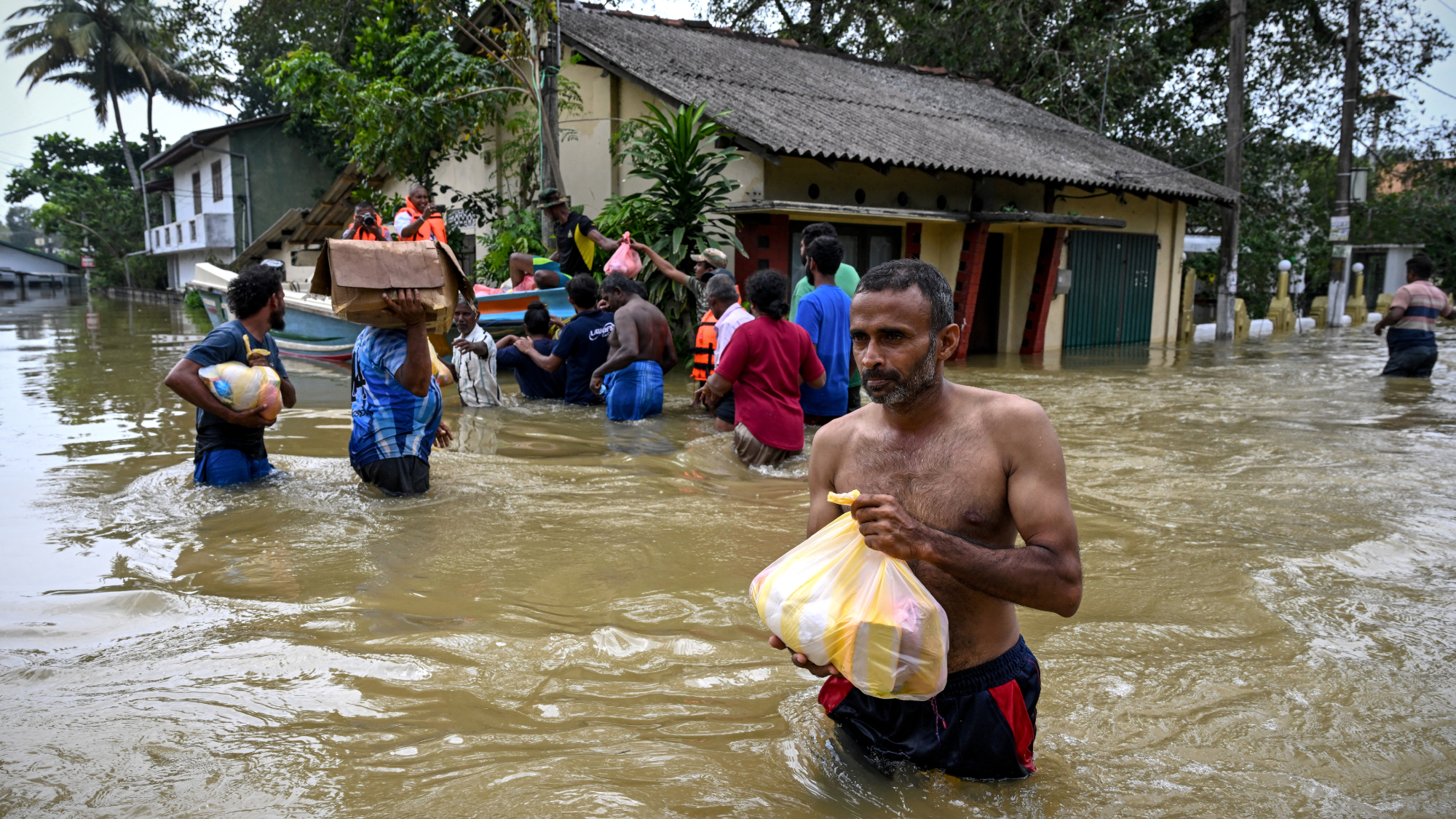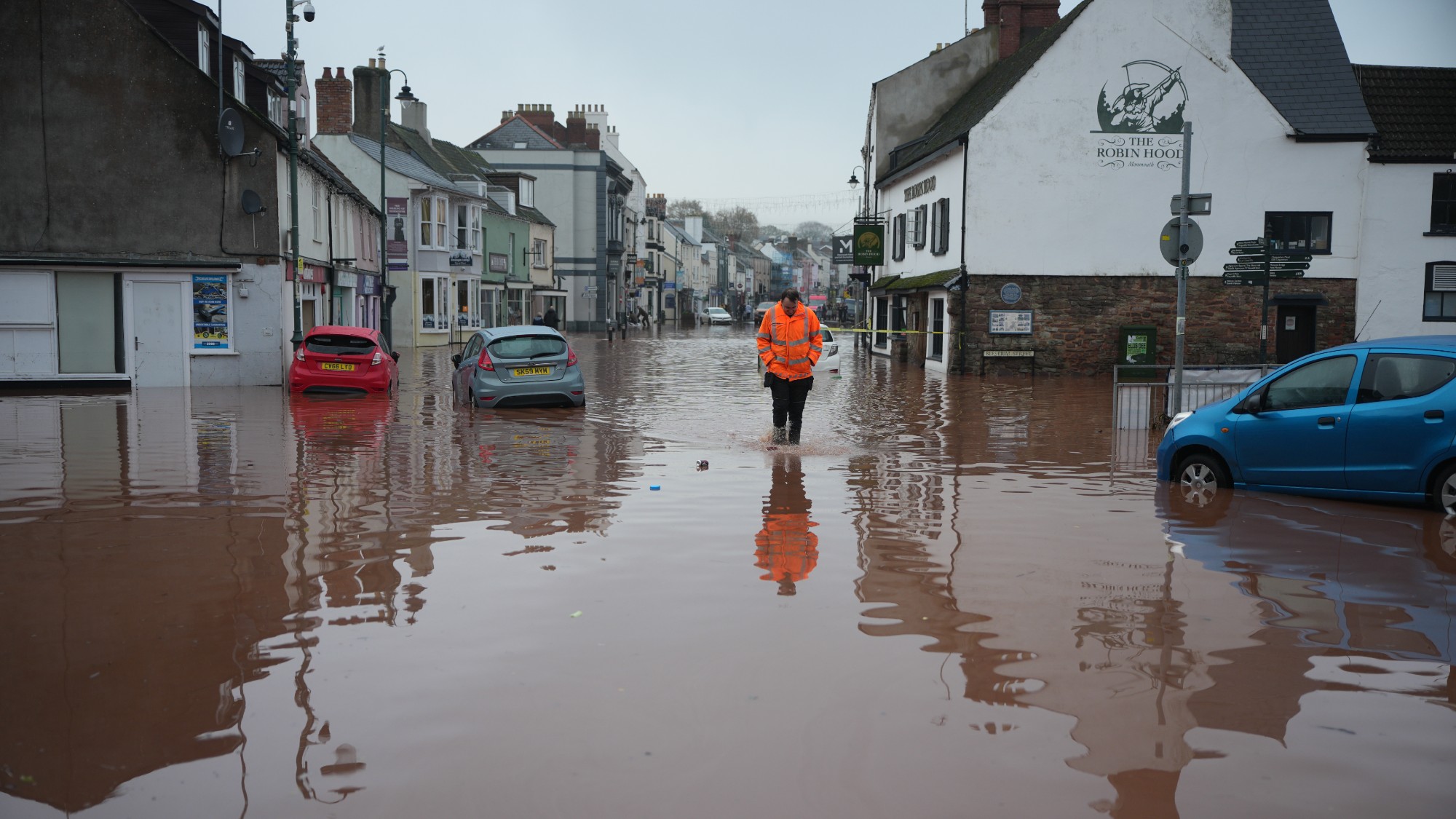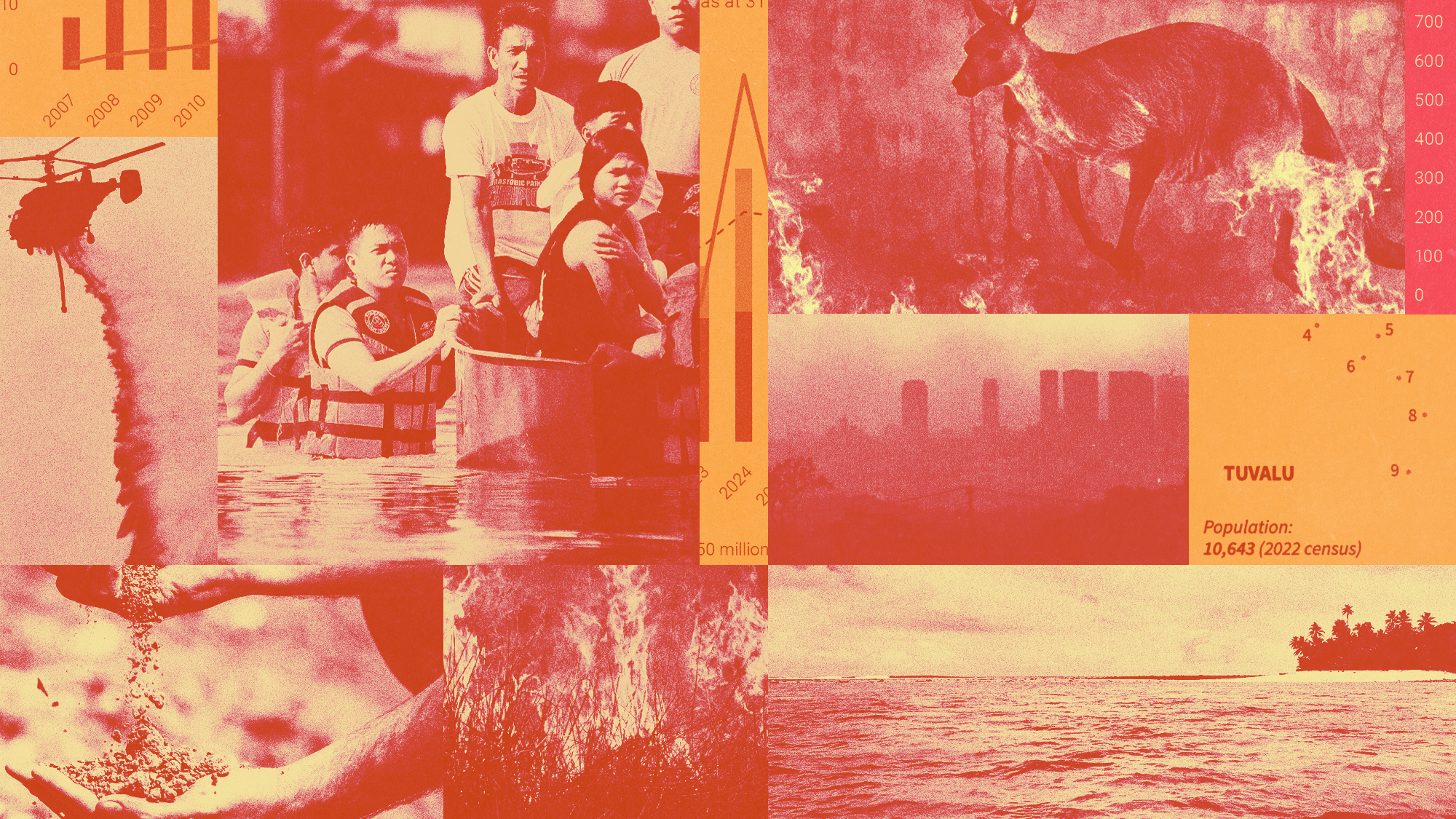The danger of fire-ice
Methane is frozen at the bottom of the ocean. But maybe not for long.


Lurking at the bottom of the ocean is a ticking time bomb of potential climate disaster. This would-be catastrophe is fire-ice, the oxymoronic compound frozen deep under the ocean floor. As the oceans are warming, fire-ice is slowly melting and emitting the greenhouse gas methane into the atmosphere. Rising levels of carbon dioxide are famously problematic, but methane is a far more potent greenhouse gas than carbon dioxide and, as such, can contribute significantly to global warming.
What is fire-ice?
Fire-ice is a frozen form of methane hydrate, a natural gas. As Wired explained, "Under sufficiently low temperatures and high pressure, methane gas and liquid water freeze together under the seafloor to create an ice-like formation that looks like marshmallow." The name "fire-ice?" Methane hydrate is both frozen and flammable, unlike regular ice.
Warming ocean temperatures are slowly melting the fire-ice, releasing significant amounts of methane into the atmosphere, according to a study published in Nature Geoscience. When fire-ice melts, the methane dissociates and dissolves into the seawater or bubbles up to the water's surface. According to the U.S. Department of Energy, "When brought to the Earth's surface, one cubic meter of gas hydrate releases 164 cubic meters of natural gas." Scientists believe that released methane hydrate "might have caused one of the most dramatic climatic shifts the Earth's experienced," approximately 52 million years ago, when the planet warmed during its early evolution, Richard Davies, co-author of the study, told Wired.
The Week
Escape your echo chamber. Get the facts behind the news, plus analysis from multiple perspectives.

Sign up for The Week's Free Newsletters
From our morning news briefing to a weekly Good News Newsletter, get the best of The Week delivered directly to your inbox.
From our morning news briefing to a weekly Good News Newsletter, get the best of The Week delivered directly to your inbox.
Previously, scientists didn't see fire-ice as much of a climate risk because it was located quite deep in the ocean. "In the deepest parts of the ocean, fire-ice might dissociate and burp up methane, but microbes will destroy the gas before it can reach the surface," Wired explained, adding that "methane also readily dissolves in seawater." The problem is that the methane gas from the fire-ice has the ability to migrate closer to land and begin an ascent into the sky. "It is true that if you can get methane to do this migration trick and get as shallow as, say, 100 meters, you're starting to look at the possibility that some of that methane can reach the atmosphere," geophysicist Carolyn Ruppel, told Wired. "It is likely probable that there are numerous places where hydrate is breaking down at profound water depth, and the gas is being channeled upslope."
What are the risks?
Methane is 80 times as potent a greenhouse gas as carbon dioxide. As such, it is more effective at trapping heat within the atmosphere and worsening climate change. More methane, with the unwelcome assistance of fire-ice, could reach the atmosphere than previously anticipated and raise global temperatures faster. In turn, this creates a feedback loop where the warmer atmosphere will cause even more methane to be released. More research needs to be done to "understand better the role of hydrates in the climate system," Christian Berndt, one of the authors of the Nature Geoscience study, said in a statement,
Despite the threat, melting fire-ice "does not necessarily mean that methane will vent to the atmosphere catastrophically," John Kessler, a researcher at the University of Rochester, told Wired. Potent methane is the second most human-emitted greenhouse gas after carbon dioxide, according to the Environmental Protection Agency, accounting for approximately 16% of global greenhouse gas emissions. The pressing issue then is how to limit any controllable methane emissions.
The agriculture industry is one of the largest methane emitters on the planet, but "methane can come from anywhere food or plants decompose without oxygen, like marshes, landfills and fossil fuels," Popular Science noted. The Intergovernmental Panel on Climate Change made limiting methane emissions across the globe a priority in 2021. In addition, carbon dioxide (CO2) emissions remain the largest contributor to climate change and should still be the biggest focus of climate efforts. "If you want to get worried about something, let's focus on anthropogenic CO2 and methane," Ruppel remarked about man-made greenhouse gas emissions. "Let's not think that this is the major problem."
A free daily email with the biggest news stories of the day – and the best features from TheWeek.com
Devika Rao has worked as a staff writer at The Week since 2022, covering science, the environment, climate and business. She previously worked as a policy associate for a nonprofit organization advocating for environmental action from a business perspective.
-
 Crest falling: Mount Rainier and 4 other mountains are losing height
Crest falling: Mount Rainier and 4 other mountains are losing heightUnder the radar Its peak elevation is approximately 20 feet lower than it once was
-
 Death toll from Southeast Asia storms tops 1,000
Death toll from Southeast Asia storms tops 1,000speed read Catastrophic floods and landslides have struck Sri Lanka, Indonesia, Thailand and Malaysia
-
 Can for-profit geoengineering put a pause on climate change?
Can for-profit geoengineering put a pause on climate change?In the Spotlight Stardust Solutions wants to dim the sun. Scientists are worried.
-
 How will climate change affect the UK?
How will climate change affect the UK?The Explainer Met Office projections show the UK getting substantially warmer and wetter – with more extreme weather events
-
 Can the UK do more on climate change?
Can the UK do more on climate change?Today's Big Question Labour has shown leadership in the face of fraying international consensus, but must show the public their green mission is ‘a net benefit, not a net cost’
-
 Did Cop30 fulfil its promise to Indigenous Brazilians?
Did Cop30 fulfil its promise to Indigenous Brazilians?Today’s Big Question Brazilian president approves 10 new protected territories, following ‘unprecedented’ Indigenous presence at conference, both as delegates and protesters
-
 Can the world adapt to climate change?
Can the world adapt to climate change?Today's Big Question As the world gets hotter, COP30 leaders consider resilience efforts
-
 Taps could run dry in drought-stricken Tehran
Taps could run dry in drought-stricken TehranUnder the Radar President warns that unless rationing eases water crisis, citizens may have to evacuate the capital



